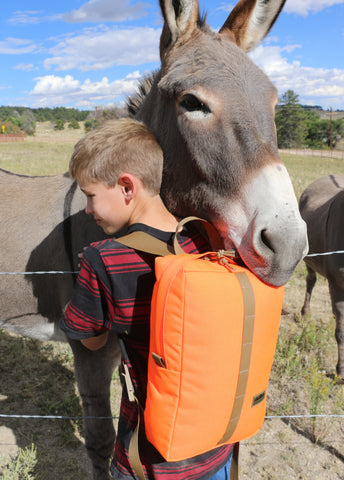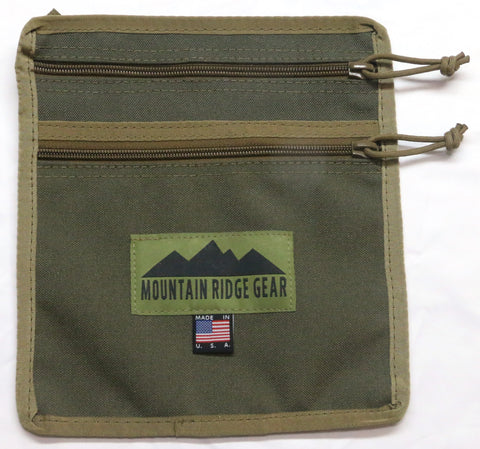For the past 20+ years I have been an enthusiast of ultra-lightweight (UL) packs and gear. I have logged hundreds of miles on the trail with a pack on my back. Admittedly, I am a little fanatical about weight. I keep detailed spread sheets of the items I pack with the weights in pounds and ounces and write the weight on my gear to help me decide if what I’m bringing along is really worth the weight. Being an UL back-packer equates to being a minimalist. The goal for someone like me has been to find items with multiple uses or just doing without. You may have heard of someone cutting the end of their tooth brush off to save weight. Yep, I did that. The old saying “every ounce counts” has been my mantra since my Dad first took me on a hike to the Appalachian Trail years ago. I remember my Dad doing a shakedown of my pack and asking me, “Do you really need that?” That experience prompted my quest to carry only what I needed and maintain the lightest pack possible. Now that I have burros should I abandon my quest for lightweight gear? That, of course, is a loaded question because the answer is yes and no.
One afternoon I laid out everything I would need for a multiday back-country trip, including food, to see how it would fit in the panniers I built. To my surprise it all fit in less than one and half 4,000 cubic inch panniers. That left more than two and half panniers empty. If we stick to the standard that a burro should carry no more than 20 – 25 percent of their body weight, my burros could carry between 125 and 150 pounds each. I looked around my garage for more “stuff” and realized I do not have 300 pounds of gear to fill the panniers! One of the traps that neophyte backpackers fall into when carrying a large pack is that because they have the room they try and carry more. I found myself falling into the same trap as a blossoming burro packer. Just because a burro can carry a certain amount of weight should I load them down to their maximum? We’ll get back to that question in a moment. First, let’s talk about additional items I pack on the burros that I did not pack when I carried everything on my back.
To begin with, I bring better, more varied food choices. As a backpacker I carried lots of dehydrated foods like Mountain House meals. Dehydrated meals are great for weight conscious folks like me, they are light weight and quick and easy to prepare. However, there is only so much variety in meal choices and they can be bulky, taking up lots of room in a backpack. Plus, when food is dehydrated and preserved it is inherently high in sodium. If, like me, you try to maintain a low sodium diet dehydrated meals might not be your first choice. With the burros, I can carry a larger variety of foods that have not been dehydrated. I can also pack cooking pots in multiple sizes so that I can cook different types of meals. I like to bring a few potatoes and carrots and fresh elk meat and make a back-country stew. Or, using two pots, bake some blueberry muffins over a camp stove. I have also been known to pack a few adult beverages and a dunk bag for keeping them cool in the creek. Having the burros has opened up a whole new world of food choices in the back-country. I don’t have to skimp on food like I did when everything was all on my back.
Secondly, I carry a larger medical kit and survival supplies. I do this for a few obvious reasons; I have to be concerned with the burro’s well being as well as mine and I have medical supplies for both. I have a friend who’s a dentist. Recently, I bribed him with a few beers to stop by and give my son and me a short lesson on the use of sutures. I hope that I never have to test my skill with a needle and cat gut but should the situation arise I am prepared. Because of the risk of severe infection a suture should only be used in extreme conditions. It’s good to know if the burros sustain a serious injury I can sew them up. I have equine leg wraps that help hold on bandages to a pack animal’s leg but would also work for humans. Plus, topical wound care treatments and large bandages and duct tape. I have a book on basic first aid, a book of knots (“Knots Hitches and Their Uses”, By John Sharp) and a book on eatable plants that I carry. Finally, I also bring along a small hand saw and a hatchet, two items I never considered carrying in a backpack because of the weight.
There are a number of items I need to carry that are specific to the burros. There are multiple ways to keep the burros in camp, regardless, I always pack picket stakes and ropes. When I am on an extended trip, like during elk season, I bring a portable electric corral and hunter orange turn-out blankets. I also pack a soft side water container that I fill up in the creek and place in their corral. I pack extra rope for a high line or to tie things to the burro’s pack saddles if need be. To drive the picket stakes or the grounding rod for the electric corral in the ground I bring a hammer.
When I meet someone along the trail or tell folks about my burros I usually get asked, “How much can they carry?” I explain they can carry up to 150 pounds each. But, do I load them up to the maximum? Not if I can help it. There are several factors when determining how much an animal can carry. Their weight, health and physical abilities are the main considerations. If the animal has been in a stall all year and has not been exercising and getting ready for a difficult trail then the results may be less than satisfactory. I work my burros all year so that when a tough hike comes they are ready. Even though they are in great physical shape there are still a few more things to consider. My elk honey-hole is more than 7 miles from the trail-head in the Colorado wilderness, over moderate to difficult rocky trails. When I consider how much I want them to carry I also take into account the difficulty of the trail, the weather and the availability of water along the route. A good burro will always try and please their master, but I try to never load them to their maximum. As a matter of fact, I try and keep each burro under a hundred pounds. Just like humans, a burro will be able to travel farther if they are comfortable and that means less weight on their backs.
If you are new to the use of pack animals and have always carried your pack on your back don’t abandon the UL mentality. There’s nothing wrong with trying to save weight. Having pack animals opens up a whole new world of back-country enjoyment with the ability to pack gear and creature comforts you may have never considered. Enjoy the benefits of your beasts of burden but do not over load them. Don’t through the kitchen sink on their back! Taking care of your animal will help ensure you and your hiking companion will get maximum enjoyment out of your adventures.



jenn
Hi. I am in the middle of rescuing a 12 hand high jenny from a kill pen she is about 2-3 years old. She will need to fill out a bit but do u think after training she will be able to carry 150lbs? I plan to take it slow and start small figuring about two years for training up to packing and cart pulling.